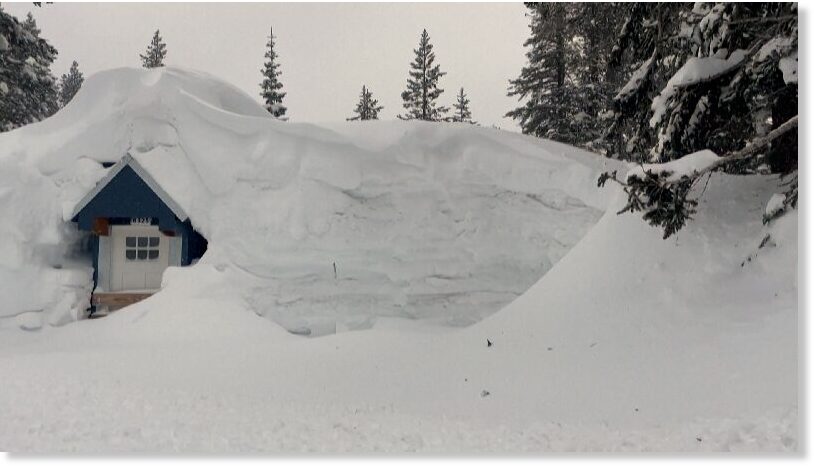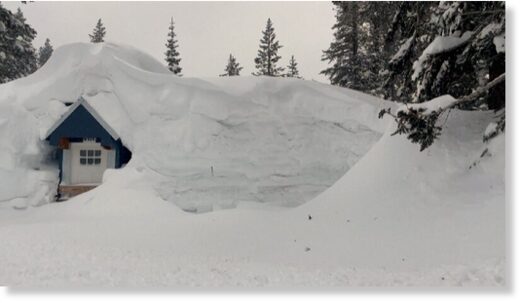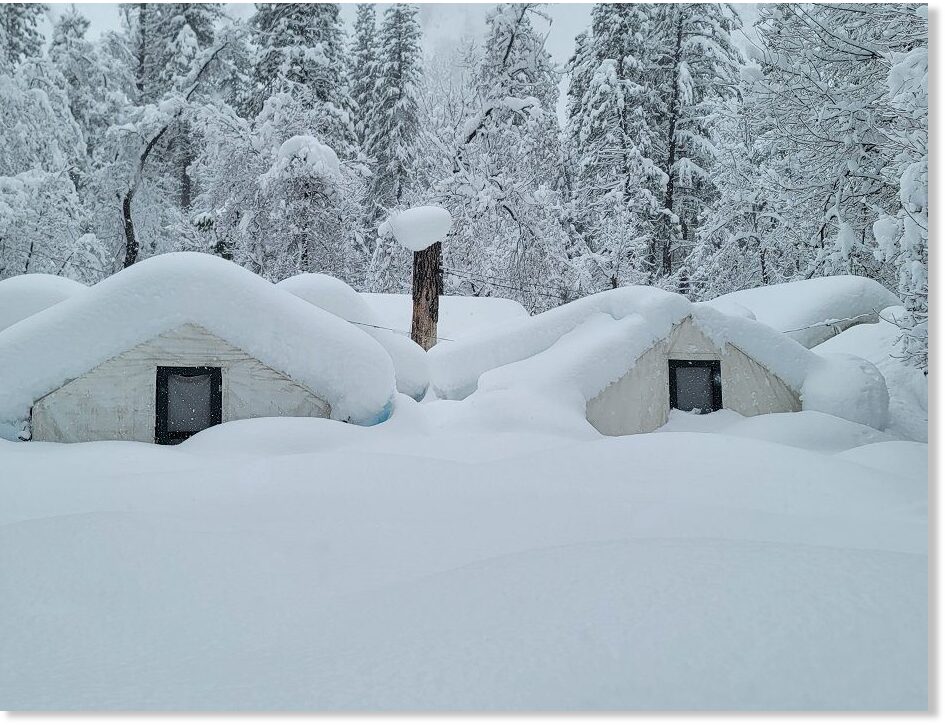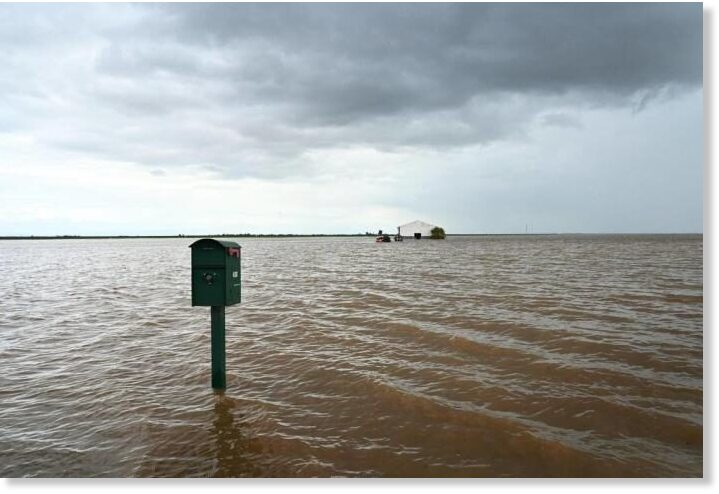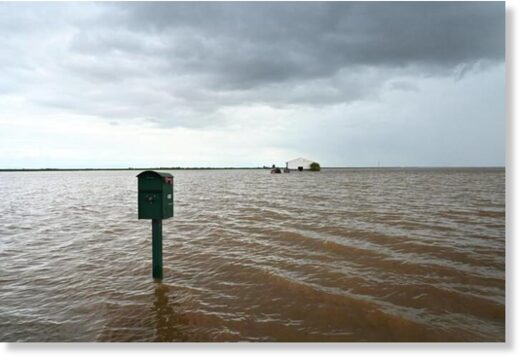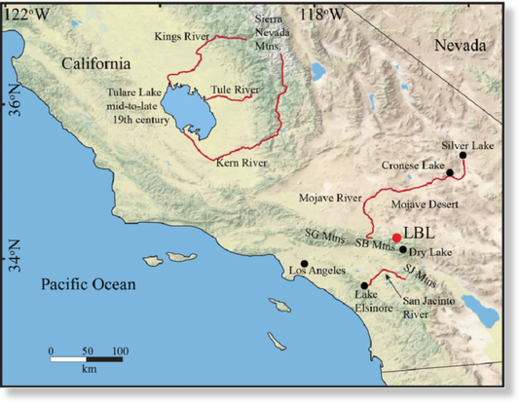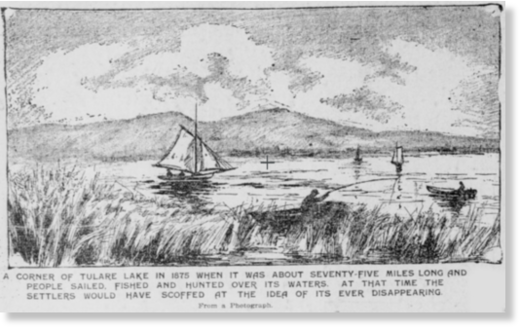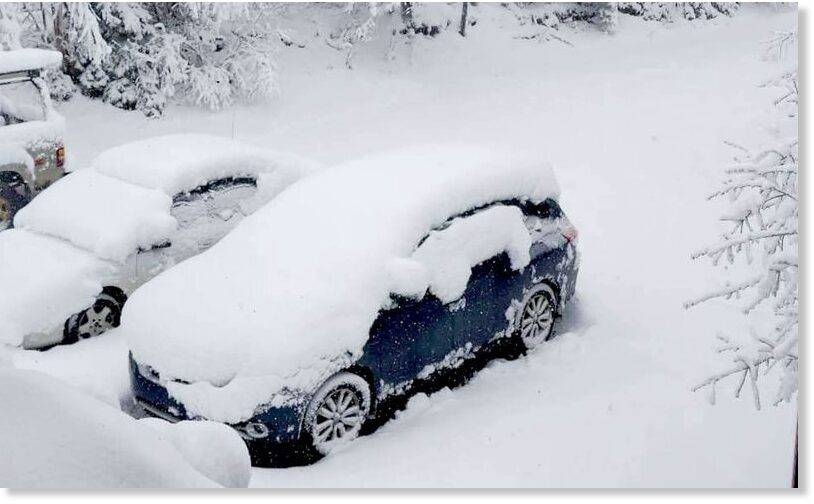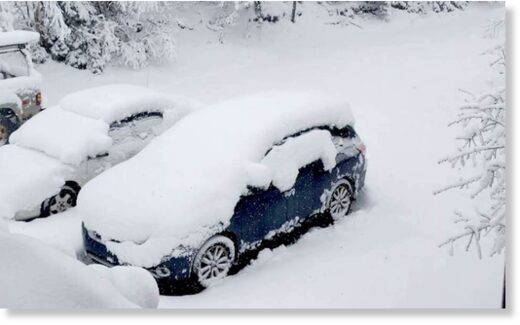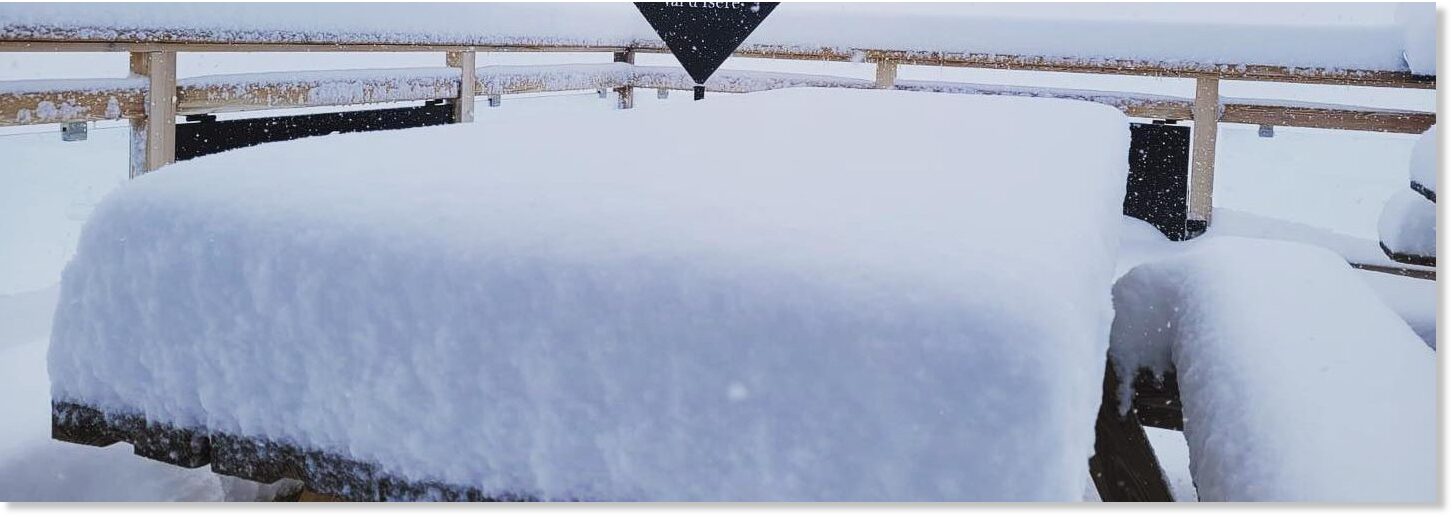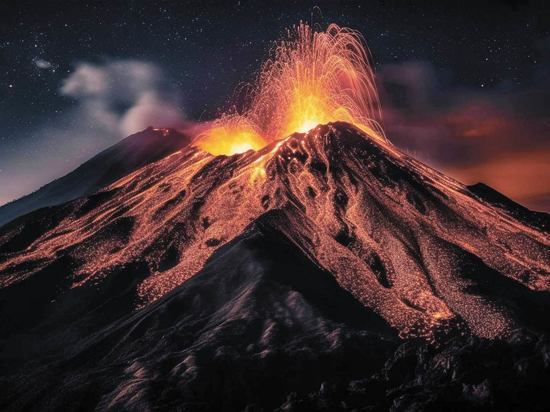Apart from Mallorca being hit by snow (also reported on SOTT), Barcelona is also covered with snow:
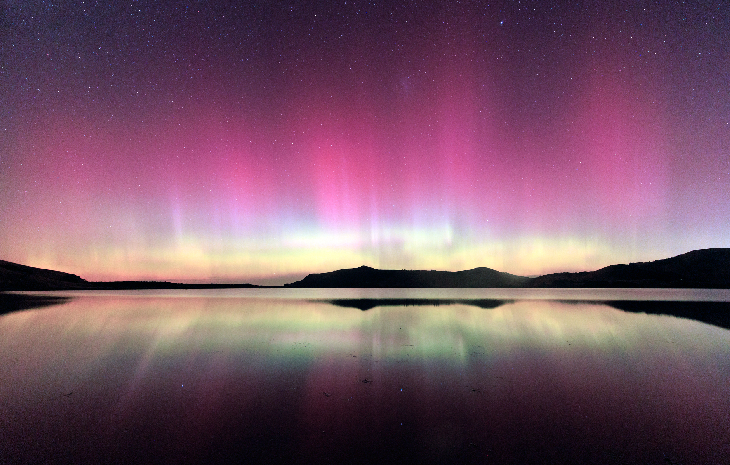
 electroverse.co
electroverse.co
Aemet has also issued an incredibly rare red alert for Mallorca, Spain’s largest Balearic Island in the Mediterranean, with heavy snow–as much as 50 cm (1.64 ft), and freezing lows–below -2C (28.4F) hitting the Tramuntana Mountains — with the snow line falling to a historic 100 m (328 ft).
The snow has led to many road closures across Spain.
And across central and western Europe, temperatures are holding well-below the norm which has been the case throughout February. I can attest here in central Portugal, where I’ve taken to heating my polytunnel with tea light heaters in order to protect my tender starts.
Following Fridays record-breaking surface mass balance (SMB) gains, the Greenland ice sheet has been at it again.
Monday, February 27 saw the sheet gain another 9 gigatons:
 [DMI]
[DMI]
Any ice loss at the ‘bottom of the world’ is due to circulation patterns (i.e. winds) within the Antarctic vortex–which is particularly strong (and cold) this year. These winds are driving sea ice offshore and into the oceans — the ice is not melting due to human prosperity (i.e. CO2 emissions) as the establishment would have us believe.
–It can’t be: Antarctica has been exceptionally cold in recent years, posting its coldest-ever coreless winter (April-Sept) last year, and routinely holding below monthly averages and busting a string of low temperature records ever since.
As recently as Monday, February 27, Dome Fuji, a Japanese Base station in Antarctica, dropped to -58.1C (-72.6F). This is now the lowest global temperature in February 2023, usurping the historically frigid -57.9C (-72.2F) logged at Oymyakon, Siberia earlier in the month.

Strong Auroras At Historically Low Latitudes; Barcelona Under Snow, Red Alert Issued In Mallorca; California's Record Snow Year; Greenland SMB Spikes Again; + Antarctica Cools - Electroverse
The planet is cooling and will continue to cool in line with low solar activity...
BARCELONA UNDER SNOW, RED ALERT ISSUED IN MALLORCA
Descending Arctic air into Central and Western Europe has delivered snow to the likes of Barcelona:Aemet has also issued an incredibly rare red alert for Mallorca, Spain’s largest Balearic Island in the Mediterranean, with heavy snow–as much as 50 cm (1.64 ft), and freezing lows–below -2C (28.4F) hitting the Tramuntana Mountains — with the snow line falling to a historic 100 m (328 ft).
The snow has led to many road closures across Spain.
And across central and western Europe, temperatures are holding well-below the norm which has been the case throughout February. I can attest here in central Portugal, where I’ve taken to heating my polytunnel with tea light heaters in order to protect my tender starts.
Following Fridays record-breaking surface mass balance (SMB) gains, the Greenland ice sheet has been at it again.
Monday, February 27 saw the sheet gain another 9 gigatons:
 [DMI]
[DMI]ANTARCTICA COOLS
Antarctica is cooling — the data is clear and undeniable.Any ice loss at the ‘bottom of the world’ is due to circulation patterns (i.e. winds) within the Antarctic vortex–which is particularly strong (and cold) this year. These winds are driving sea ice offshore and into the oceans — the ice is not melting due to human prosperity (i.e. CO2 emissions) as the establishment would have us believe.
–It can’t be: Antarctica has been exceptionally cold in recent years, posting its coldest-ever coreless winter (April-Sept) last year, and routinely holding below monthly averages and busting a string of low temperature records ever since.
As recently as Monday, February 27, Dome Fuji, a Japanese Base station in Antarctica, dropped to -58.1C (-72.6F). This is now the lowest global temperature in February 2023, usurping the historically frigid -57.9C (-72.2F) logged at Oymyakon, Siberia earlier in the month.

